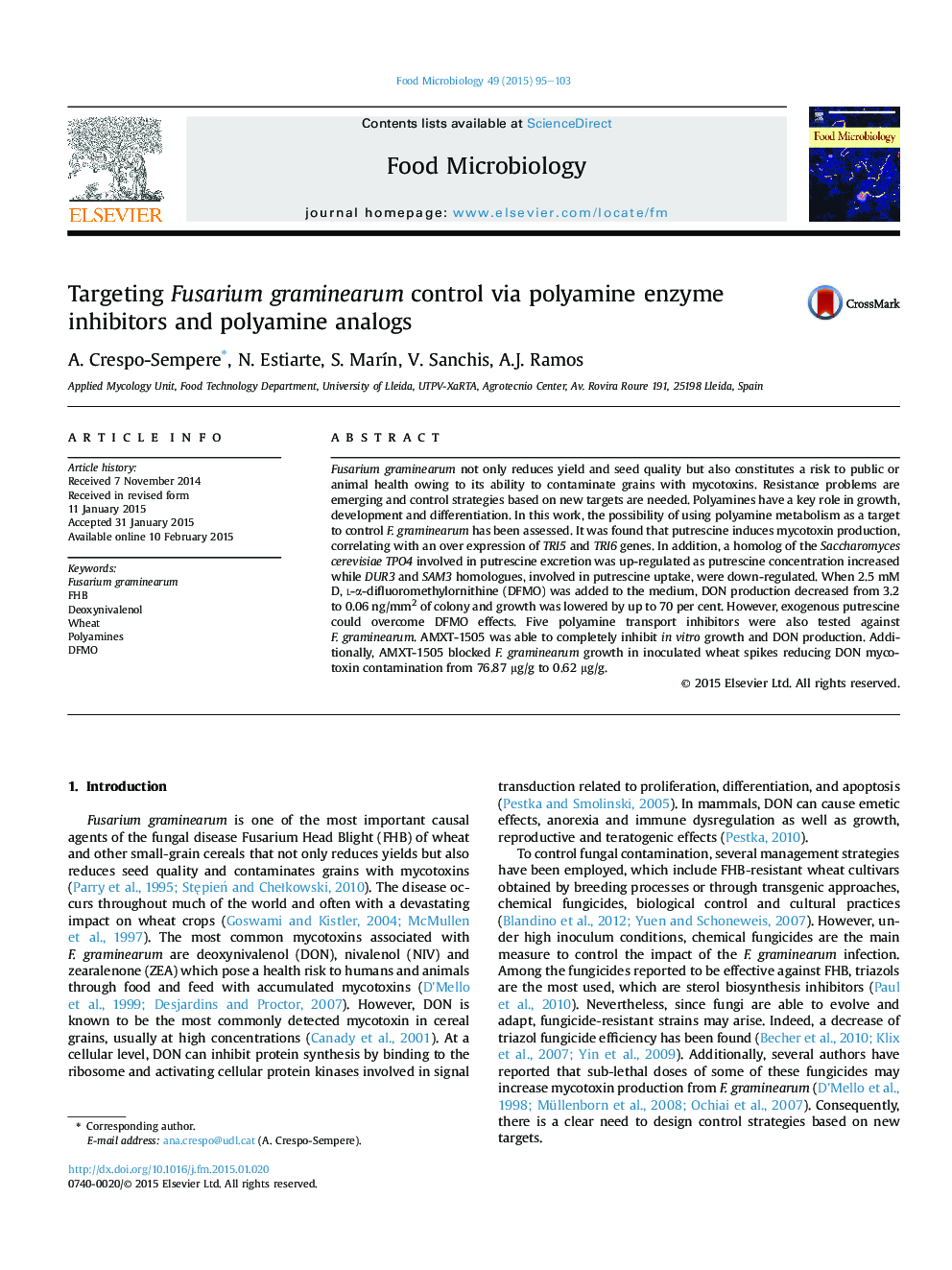| کد مقاله | کد نشریه | سال انتشار | مقاله انگلیسی | نسخه تمام متن |
|---|---|---|---|---|
| 4362736 | 1616251 | 2015 | 9 صفحه PDF | دانلود رایگان |

• Putrescine activates TRI5 and TRI6, inducing DON production in F. graminearum.
• DFMO reduces growth and DON production but exogenous putrescine overcomes its effects.
• Some polyamine analogs inhibit growth and DON contamination in vitro and in planta.
Fusarium graminearum not only reduces yield and seed quality but also constitutes a risk to public or animal health owing to its ability to contaminate grains with mycotoxins. Resistance problems are emerging and control strategies based on new targets are needed. Polyamines have a key role in growth, development and differentiation. In this work, the possibility of using polyamine metabolism as a target to control F. graminearum has been assessed. It was found that putrescine induces mycotoxin production, correlating with an over expression of TRI5 and TRI6 genes. In addition, a homolog of the Saccharomyces cerevisiae TPO4 involved in putrescine excretion was up-regulated as putrescine concentration increased while DUR3 and SAM3 homologues, involved in putrescine uptake, were down-regulated. When 2.5 mM D, l-α-difluoromethylornithine (DFMO) was added to the medium, DON production decreased from 3.2 to 0.06 ng/mm2 of colony and growth was lowered by up to 70 per cent. However, exogenous putrescine could overcome DFMO effects. Five polyamine transport inhibitors were also tested against F. graminearum. AMXT-1505 was able to completely inhibit in vitro growth and DON production. Additionally, AMXT-1505 blocked F. graminearum growth in inoculated wheat spikes reducing DON mycotoxin contamination from 76.87 μg/g to 0.62 μg/g.
Journal: Food Microbiology - Volume 49, August 2015, Pages 95–103